-
1 of 253523 objects
Khamsah-yi Navai خمسه نوایی (The Quintet of Navai) 1492c. 1615
Manuscript on gold-flecked paper with illuminated frontispiece and section headings throughout in opaque watercolour including metallic paints and gold leaf. | 34.4 x 23.0 cm (book measurement (conservation)) | RCIN 1005032
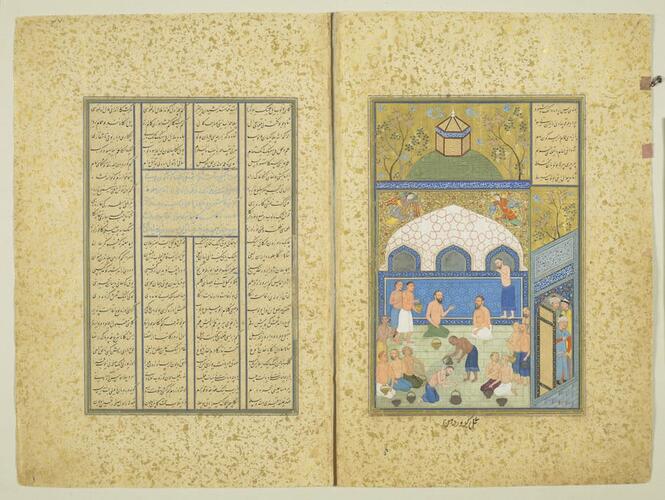
Ali Shir Navai (d. 1501)
Master: Khamsah-yi Navai خمسه نوایی (The Quintet of Navai) Item: The Day of Judgement is discussed in a bathhouse 1492c. 1615

Ali Shir Navai (d. 1501)
Master: Khamsah-yi Navai خمسه نوایی (The Quintet of Navai) Item: Rabiah al-Adawiyah رابعة العدوية (The Kaaba moves for Saint Rabiah al-Adawiyah) 1492c. 1615
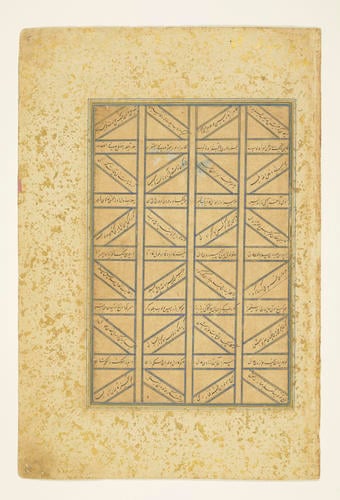
Ali Shir Navai (d. 1501)
Khamsah-yi Navai خمسه نوایی (The Quintet of Navai) 1492c. 1615
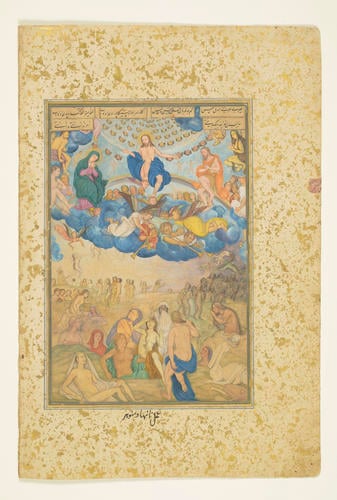
Ali Shir Navai (d. 1501)
Master: Khamsah-yi Navai خمسه نوایی (The Quintet of Navai) Item: Yawm al-Din يوم الدين (The Day of Judgement) 1492c. 1615
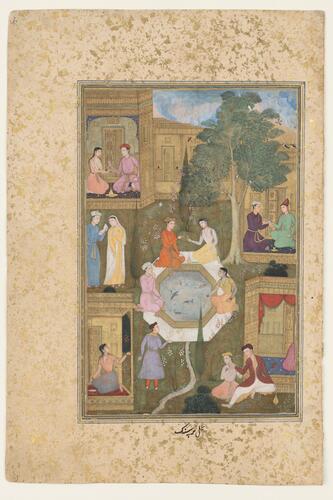
Ali Shir Navai (d. 1501)
Master: Khamsah-yi Navai خمسه نوایی (The Quintet of Navai) Item: Seven couples in a garden 1492c. 1615
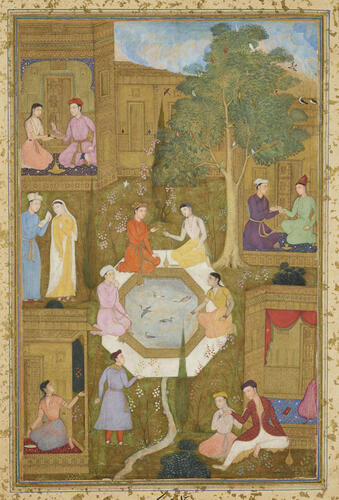
Ali Shir Navai (d. 1501)
Master: Khamsah-yi Navai خمسه نوایی (The Quintet of Navai) Item: Seven couples in a garden 1492c. 1615
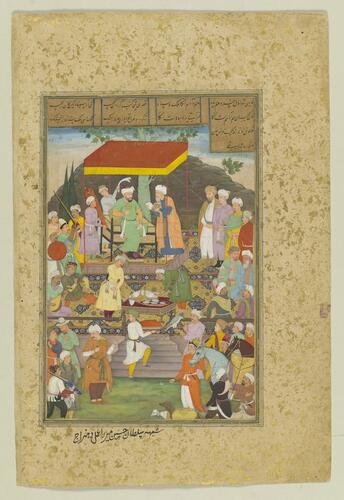
Ali Shir Navai (d. 1501)
Master: Khamsah-yi Navai خمسه نوایی (The Quintet of Navai) Item: Sultan Husayn Mirza سلطان حسین میرزا (Sultan Husayn Mirza rests after a hunt) 1492c. 1615

Ali Shir Navai (d. 1501)
Master: Khamsah-yi Navai خمسه نوایی (The Quintet of Navai) Item: Rabiah al-Adawiyah رابعة العدوية (The Kaaba moves for Saint Rabiah al-Adawiyah) 1492c. 1615

Ali Shir Navai (d. 1501)
Master: Khamsah-yi Navai خمسه نوایی (The Quintet of Navai) Item: Two loyal friends stand together in a vain bid to prevent fatal combat between their respective groups 1492c. 1615
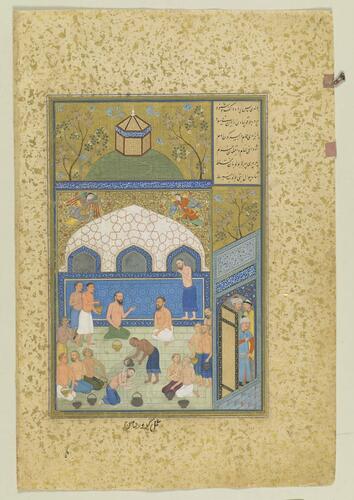
Ali Shir Navai (d. 1501)
Master: Khamsah-yi Navai خمسه نوایی (The Quintet of Navai) Item: The Day of Judgement is discussed in a bathhouse 1492c. 1615
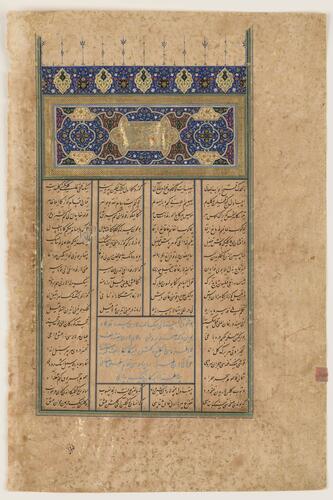
Ali Shir Navai (d. 1501)
Khamsah-yi Navai خمسه نوایی (The Quintet of Navai) 1492c. 1615

Ali Shir Navai (d. 1501)
Khamsah-yi Navai خمسه نوایی (The Quintet of Navai) 1492c. 1615
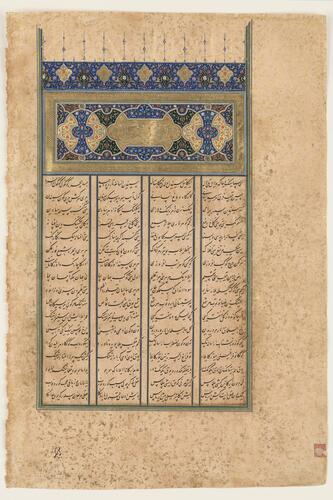
Ali Shir Navai (d. 1501)
Khamsah-yi Navai خمسه نوایی (The Quintet of Navai) 1492c. 1615
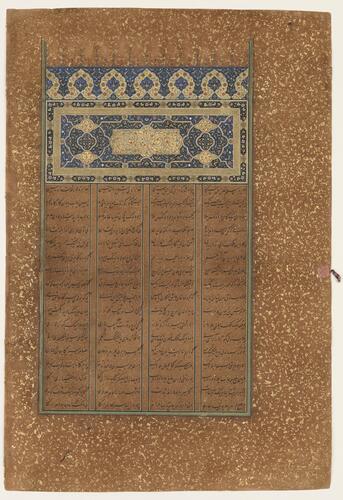
Ali Shir Navai (d. 1501)
Khamsah-yi Navai خمسه نوایی (The Quintet of Navai) 1492c. 1615
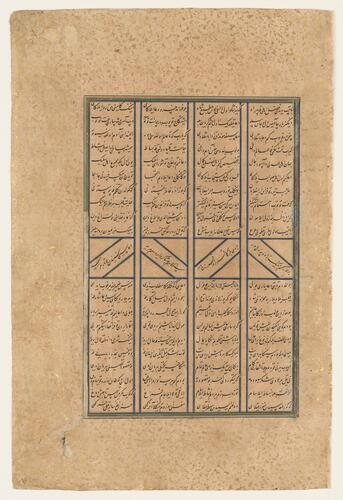
Ali Shir Navai (d. 1501)
Khamsah-yi Navai خمسه نوایی (The Quintet of Navai) 1492c. 1615
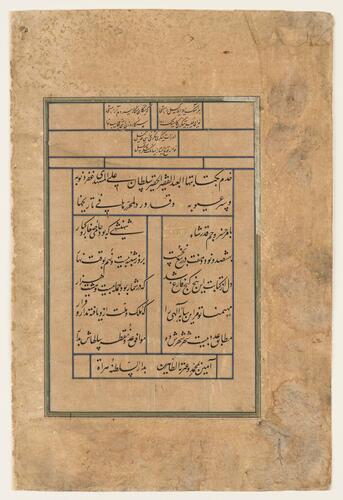
Ali Shir Navai (d. 1501)
Khamsah-yi Navai خمسه نوایی (The Quintet of Navai) 1492c. 1615

Ali Shir Navai (d. 1501)
Master: Khamsah-yi Navai خمسه نوایی (The Quintet of Navai) Item: Seven couples in a garden 1492c. 1615
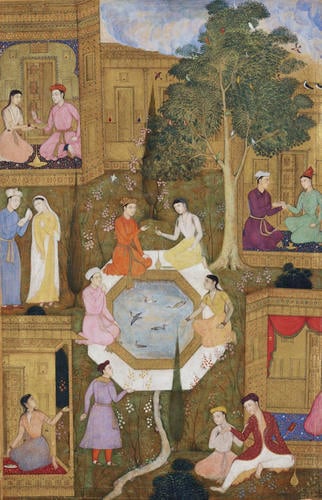
Ali Shir Navai (d. 1501)
Master: Khamsah-yi Navai خمسه نوایی (The Quintet of Navai) Item: Seven couples in a garden 1492c. 1615
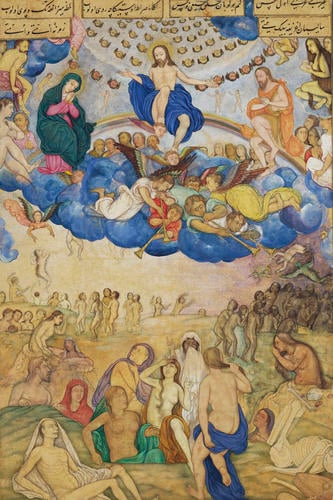
Ali Shir Navai (d. 1501)
Master: Khamsah-yi Navai خمسه نوایی (The Quintet of Navai) Item: Yawm al-Din يوم الدين (The Day of Judgement) 1492c. 1615



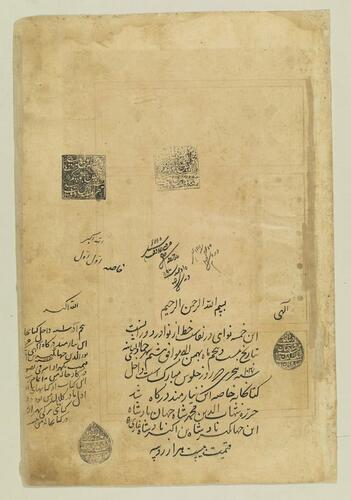

















-
An illuminated manuscript of the Khamsah of Navai written in Herat (modern Afghanistan) by the calligrapher Sultan Ali Mashhadi and later illustrated with six Mughal paintings.
Nizam al-Din Ali Shir (1441-1501), also known by his penname Navai meaning 'melody maker', is considered the Chaucer of the Turks. Navai was a close advisor to the Timurid ruler Sultan Husayn Mirza (1438–1506) at his court in Herat. As a statesman, he amassed great wealth and political power but he is best remembered today as a poet and a patron of the arts. He was the first to promote Chagatai Turkish as a literary language over the more widely used Persian.
Ali Shir composed six long narrative poems (masnavis) in Chagatai Turkish inspired by the Persian poems of Nizami, Amir Khusraw and Jami. His Khamsah, written in 1483–5, contains five of them: Hayrat al-Abrar (The Wonders of Good People), Farhad va Shirin (Farhad and Shirin), Layla va Majnun (Layla and Majnun), Saba-yi Sayyar (The Seven Planets), and Sadd-i Iskandari (Alexander’s Wall).
According to the manuscript’s colophon (folio 300), this volume of Ali Shir’s Khamsah was written in Herat in 1492, during Navai’s lifetime. The calligrapher was Sultan Ali al-Mashhadi (1453-1520) a celebrated scribe at the court of the Timurid ruler Sultan Husayn. Both Sultan Husayn and Ali Shir regularly employed him but the Persian verses in praise of Sultan Husayn in the colophon might suggest this manuscript was a royal commission.
The text is written on highly burnished gold sprinkled paper and set into gold flecked borders which range in colour tone from very pale sand to dark brown. The texts panels are generally divided into four horizontal columns although on several pages the text is arranged in alternating diagonals. The panels are ruled in dark blue, gold, and green.
The frontispiece on folios 1v-2r (see RCIN 1005032.c) is signed by the Herati illuminator and painter Haji Mahmud (he wrote his signature in a small roundel at the lower left of folio1b). There are also illuminated headings at the start of each of the poems on folios. 53, 122, 165, and 222.
The manuscript’s six paintings (see RCINs 1005032.d, e, f, g, h, and i) are all found within 30 pages of each other in the first poem (folios 5, 6, 12, 20, 30, and 35). The last of these has an inscription with the date 947AH (1540AD), almost 50 years after the text was completed, suggesting that the pages reserved for paintings may originally have been left blank and not painted until the sixteenth century.
The square seal on folio 1r of Hamida Banu Begum, wife of the second Mughal emperor Humayun, dated 1560-1 suggests the manuscript was in her possession by that date. After her death in 1604, the manuscript passed to her grandson, the fourth Mughal emperor Jahangir. The first five paintings were removed (possibly for inclusion in his albums) and new paintings by his own artists pasted on top c.1615. For the sixth illustration, part of the paint surface was scraped away and repainted by a Mughal artist, suggesting that paint losses and flaking may have been the reason why the page was not also removed. The original illustrations on folios 5 and 6 were presumably read as a single composition over a double page, but the new Mughal insertions are two distinct paintings.
Inscriptions in the hands of Mughal emperors Jahangir and Shah-Jahan on folio 1r state that they inherited the book on their respective accessions. Jahangir calls it 'one of my most treasured books' and gives a value of 1,000 ashrafis, a valuation which Shah-Jahan almost doubled to 20,000 rupees. This folio also contains the tear drop shaped seals of Shah-Jahan and Alamgir.After the Mughal imperial libraries were dispersed in the mid-18th century, the manuscript was acquired for the royal library in Lucknow and contains inspection notes from 1781, 1782 and 1786. The text block was trimmed and rebound in black morocco covers with gilt stamped medallions and borders.
In 1799, Saadat Ali Khan, Nawab of Awadh, presented the Khamsah manuscript with five other volumes (see RCINs 1005015, 1005017, 1005022, 1005025, 1005068) to Lord Teignmouth, Governor-General of India (1792-99), intended as gifts for George III. In a memo written for the King, Teigmouth described the volume as ‘The five poems of Navaie a Turkish Poet’.
In 1872, Queen Victoria received another manuscript of the author’s poetry written by the same calligrapher (RCIN 1005033), a gift from the Amir of Bukhara.Provenance
Possibly commissioned by Sultan Husayn Mirza. Owned by Hamida Banu Begum and the Mughal emperors Jahangir, Shah-Jahan and Alamgir. Acquired for the Awadh royal library at Lucknow. Presented by Saadat Ali Khan, Nawab of Awadh, to Lord Teignmouth and delivered to George III in June 1799.
-
Creator(s)
(calligrapher)(nationality)(nationality)Acquirer(s)
-
Medium and techniques
Manuscript on gold-flecked paper with illuminated frontispiece and section headings throughout in opaque watercolour including metallic paints and gold leaf.
Measurements
34.4 x 23.0 cm (book measurement (conservation))